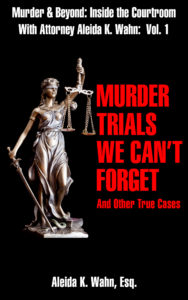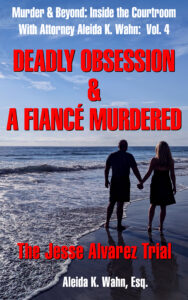
It was a gruesome sight. Beautiful Rebecca Zahau was hanging by a noose from the second-story balcony of the Spreckels Mansion. Her body was nude, making the red rope wrapped around her neck, and binding her arms behind her back, and feet even more prominent. A blue t-shirt was wrapped around her neck and a gag placed harshly in her mouth. It was the early morning hours of July 13, 2011, and Rebecca Zahau, just 32, was dead. It was the beginning of a case that would grow to sensational proportions and bring unending pain to those who loved her so.
Although her death was initially labeled “suspicious” the San Diego Sheriff’s Department and the San Diego Medical Examiner’s Office would within two months rule her death a suicide. Citing the lack of any fingerprints, DNA, or footprints belonging to anyone else other than Rebecca, the September 2, 2011 ruling was definitive. Rebecca Zahau’s heartbroken family, led by her sister Mary and mother, Pari were outraged, refusing to accept the decision for even a second. Rebecca’s love for her family and her strong Christian faith would preclude her from taking her own life they firmly believed. Rebecca was savagely murdered they concluded, and they would vindicate her. They started their own investigation, leaving no stone unturned and even removing Rebecca’s body from the deep earth for a second autopsy. But trying to prove Rebecca was murdered would be harder than they ever imagined. It would be seven long years of struggle.

Since the suicide ruling foreclosed any criminal trial, a wrongful death lawsuit was instead filed. Years of legal proceedings would follow before a trial at last began on February 28, 2018, in the San Diego courtroom of Judge Katherine Bacal. Called to defend himself against claims he battered and killed Rebecca, was tugboat captain, Adam Shacknai, the brother of Rebecca’s boyfriend Jonah. The defense, presumably funded by Jonah’s immense wealth as a pharmaceutical tycoon, brought in prominent attorneys from across the country, ready to set forth their best case. As the trial commenced, television cameras recorded every minute, their presence unmovable during the six-week trial.
The civil trial would differ from a criminal trial, which requires proof beyond a reasonable doubt and a unanimous verdict. Only proof of preponderance of the evidence was required in the civil court, meaning it was more likely than not that the fact was true, and only nine votes would be necessary to prevail. Neither was Adam’s liberty at stake, as only liability and damages in the form of monetary compensation would be at issue.
Would answers finally be revealed through the long awaited legal process? Could there at last be an explanation to the seemingly unexplainable? And would the meaning in the cryptic message SHE SAVED HIM CAN YOU SAVE HER, written in black paint on the door where Rebecca drew her last breath finally be revealed? Would Rebecca really write this message before plunging off a balcony to a nine-foot fall, or was it instead written by a hand committed to her final destruction?
Who Was Rebecca Zahau?
Rebecca’s sister, Mary and her mother, Pari were called as the first witnesses in the trial. Often through tears, they gave a picture of the Rebecca they loved. Rebecca was born in Burma, where the family lived without running water. The family became political refugees and moved to Nepal when Rebecca was two-years-old, and then found political asylum in Germany. Although the family was poor, they were rich in love and in their Christian faith. Rebecca went to bible college in Austria, where she met her husband Neil. They moved to New York and Rebecca Zahau began her American life.
Rebecca worked as a surgical technician but was also an artist. She was described as a calm, caring, person, often putting other people’s needs before her own. She was committed to a healthy lifestyle, not touching drugs or alcohol, eating healthy and loving to exercise. Rebecca was religious, at once fully embracing the church. She eventually left organized religion, but her faith remained strong, praying every night for God’s help and guidance.
The Beginning Path to Two Heartbreaking Deaths: Max’s Tragic Accident

Rebecca Zahau and her boyfriend of two years, Jonah Shacknai, were spending the summer of 2011 at Jonah’s vacation home in Coronado. The beachfront home was the historic Spreckels Mansion, a 19,000 square foot property, boasting a main residence, guesthouse, and other amenities. It was paradise. Yet the unthinkable would happen.
July 11, 2011, began as a summer day that held plans of carefree fun at the beach or San Diego Zoo. In the morning, Jonah, drove his two older children to the airport as they were returning to their mother. His youngest son, from his second marriage, six-year old Max went along for the ride. Upon returning from the airport, Jonah dropped Max off at the mansion with Rebecca while he went to do a workout at a nearby gym. Rebecca’s young sister, Xena, who was 13, was visiting from Missouri. Later, they would all go to the zoo. Rebecca had taken care of Max many times, and she had grown to love him dearly. Jonah testified they shared a special relationship, and Rebecca was teaching Max how to draw and paint. At 10:00 a.m. that July day, their lives would change forever. Rebecca was in the bathroom when she heard a horrible crash. Max had fallen over the second story banister. As he fell, he grabbed ahold of the chandelier and they both crashed to the ground. Max hit his head as his little body came to rest, and he ceased to breathe.

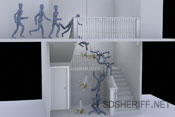
Rebecca rushed to him and began CPR. She screamed to Zena to call 911. Medical first responders found Rebecca kneeling beside Max, weeping and calling out his name. Max was rushed to the hospital, where resuscitation efforts continued. The doctors at last were able to obtain a pulse, but Max had been without oxygen for 30 minutes. He was in grave condition. The family gathered at his bedside and held out hope he would recover. Breaking everyone’s hearts, it was not to be. His injury was too severe, and Max died 5 days later on July 16, 2011.
Adam Shacknai Arrives From Memphis, Tennessee: What Happened to Rebecca Zahau That Night?
Adam Shacknai is Jonah’s younger brother. Although six years separated them in age, a deep bond developed between the two. Jonah was “captivated with him” from the very start and would always “have his back” proclaimed Adam as he took the witness stand at his trial. Although Adam and Jonah went different directions over the years, they have the same relationship they always have had. “The fire is never out. Our relationship has never changed,” Adam explained.
Adam’s attorney, Daniel Webb, walked him through his life and the tragic events of July 2011. The Shacknai boys grew up in the small town of Suffern, outside of New York City. College bound, Adam moved to Washington D.C. to attend George Washington University, but left in 1983 before receiving a degree. He then lived with Jonah and worked in his father’s business, even contemplating taking over the business. Around 1987, he instead moved to Memphis, Tennessee. He fell in love with the lifestyle and people and has called Memphis home for 30 plus years.
In 1990, Adam began to work as a deckhand, and through time eventually worked his way up to a tugboat captain. He has spent the last 28 years working on the Mississippi River. While working, he completed his college education, obtaining a degree in American Literature from Memphis University. He enjoys fiction writing, frequently jotting down ideas, and has written short stories and plays. Adam lives by himself, although he has had a 20-year relationship with Mary Bedwell, a woman 18 years older than he. When questioned if she was really his girlfriend, why they have never married, and why he does not take her to family gatherings, Adam surprised everyone by calling out from the witness stand, “Mary are you my girlfriend?” Adam assured their commitment is strong, and they spend time in the art scene, going to the theater, movies, music events, dinners, and socializing with friends.
Adam next moved to the events of July 11, 2011, when he received a telephone call from his father, who sounded like he had never heard him sound before. He told him Max had had a bad accident and was in grave condition. Adam called Rebecca and asked her if he should come out. He did not want to be in the way. Rebecca told him to “follow his heart.”
Adam booked a flight and arrived in San Diego on the afternoon of July 12th. Rebecca picked him up at the airport and they went straight to Rady Children’s Hospital. He testified he didn’t think he saw Max at that time. He saw Jonah and Howard, a doctor friend of Jonah’s who had flown out from Arizona to support him. They all left the hospital to take Howard to the airport, followed by a quick dinner at The Fish Market. The dinner was quiet and somber. They returned to the hospital and then went with Jonah across the street to the Ronald McDonald House, which is freely provided to families with children being treated for serious, often life-threatening conditions. Rebecca and Adam returned to the Spreckels Mansion.
Adam testified that once at the mansion, Rebecca seemed upset. He shared his experience with her of his mother’s cancer and death when he was a child. When asked why he would do this by attorney Greer, he responded he wanted to show he was sensitive to suffering. He said goodnight to Rebecca and retired to the guesthouse around 7:45 p.m. Whenever Adam visited his brother in Coronado, it was his custom to stay in the guesthouse. Rebecca went into the main house and Adam testified he never saw her again that night. He took a shower and as he was still on Memphis time, was tired and went to bed. His tiredness also stemmed from the flight, as he found flying stressful, often suffering panic attacks. According to the plaintiffs, Adam did not go to bed, but instead went over to the main residence where he sexually assaulted Rebecca Zahau before taking her life.

What Was the Motive for Rebecca Zahau’s Death?
After Rebecca said goodnight to Adam she went into the main residence and sent text messages to her sister Mary about Max’s condition and the hope she still held out. She then took a shower not knowing her life was about to end. During his closing argument to the jury, attorney Greer asked, “Why did Adam Shacknai brutally murder Rebecca Zahau?” He answered by saying, “It’s one of the oldest motives in the book. It’s sex.” He went on to say the sexual component was “significant.”

L to R: Keith Greer and Adam Shacknai. Sketch by Krentz Johnson
Attorney Greer then told the jury the following: Rebecca Zahau stepped out of the shower, wrapped a towel around herself and was confronted by Adam. It was “a confrontation that went awry” and it “all came to a head that evening at the Spreckels Mansion” he said. Rebecca tried to escape to the guest bedroom down the hall, a room which Rebecca had been using as an art studio. A struggle ensued in which a chair was overturned, and Rebecca ran and opened the doors leading to the balcony. She screamed for help. The deep bruises on her back show she was trying to flee. She was struck by Adam four times on her head, rendering her unconscious. Adam then bound Rebecca’s arms and feet. He took a steak knife and sexually assaulted her, violating her with the handle of the knife. He painted the message SHE SAVED HIM CAN YOU SAVE HER in black paint over the door leading into the room, and still having paint on his hands, pinched Rebecca’s nipples, leaving black paint on them. At some point, Rebecca became conscious and she grabbed the bedpost from behind, leaving her fingerprints. Greer asked, “What is she doing on the floor grabbing the bedpost?” Adam manually strangled Rebecca, before tying a rope to the bedframe, wrapping it around her neck, and lowering her over the balcony railing.

L to R: Judge Katherine Bacal, Daniel Webb, Adam Shacknai, and David Elsberg. Sketch by Krentz Johnson
Adam’s attorney, Daniel Webb, vehemently disputed Greer’s accounting, stating it was complete fiction, and that there was no evidence to support Greer’s rendition. Attorney Webb said there was not one speck of evidence that Adam was ever in the house or harmed Rebecca Zahau in any way. The scientific forensic evidence revealed no DNA, fingerprints, footprints, or anything else belonging to Adam within the house. Adam had been cleared, “exonerated” by the investigation pounded Webb, which comprised the four entities of the Coronado Police Department, the San Diego Sheriff’s Department, the San Diego County Medical Examiner’s Officer and the San Diego Crime Lab. On the witness stand, Attorney Webb asked Adam, “Did you ever do anything, at any time to participate in Rebecca’s death?” Adam answered, “I most certainly did not.”
Adam’s 911 Call & Attorney Greer’s Demonstration Using a Sex Doll
On July 13th, Adam woke early and was fitful in bed. He testified he watched pornography on his phone and masturbated. When asked why he disclosed this intimate information, he explained the police asked him what he did that day, and he wanted to be completely truthful, not leaving anything out, no matter how humiliating it might be. Attorney Greer asked if he was aroused because of what he had done to Rebecca.
Adam finally decided he would get up and walk down to the main street for some coffee. Around 6:45 a.m. he walked out of the guesthouse and he saw “something unspeakable.” He called 911. In a breathless voice he said, “I got a girl, hung herself.” When asked by the 911 operator if Rebecca was still alive, he answered, “I don’t know.” Then heavy grunting and breathing is heard as he cuts Rebecca down and shouts out, “Are you alive?” He laid her on the ground, checked her pulse, and gave her CPR. Greer said Adam only feigned his reaction to seeing Rebecca as he already knew she was dead. As a writer of fiction, he had already written the script contended Greer.
Adam testified he believed he got the knife from the main house, and then stood on a table to cut Rebecca down. In his closing, Attorney Greer said there was no need for the table, as Rebecca hung only 82 inches from the ground, and it was 87 inches to where Adam cut the rope. He could have reached that height on his own. In a graphic demonstration, Greer brought into the courtroom a life-sized mannequin, nude, bound, with long black hair and a face which had been reconstructed to resemble Rebecca Zahau. The mannequin was strung up to depict the hanging. Outside the courtroom, it was revealed the mannequin was really a sex doll, costing $8,000 to purchase and alter. Attorney Webb’s strenuous objections for its use were overruled, and he would later state the sex doll was, “so vile and wildly prejudicial that it should never have been allowed to occur.”

L to R: Keith Greer, Adam Shacknai, Jonah Shacknai, and Mary Bedwell. Sketch by Krentz Johnson
The defense showed that after Adam’s 911 call, he fully cooperated with the police. He voluntarily went to the police station and answered all their questions for 90 minutes. He allowed his body to be processed, was photographed with his shirt off, provided hair samples, fingernail scrapings, DNA swabs, fingerprints, and gave them his shoes. He walked out of the police station shoeless pointed out attorney Webb.
The Scream “Help Me! Help Me!” the Night Rebecca Zahau Died
Marsha Alison, a woman in her 70’s, lived two doors down from the Spreckels Mansion. Subpoenaed to testify at trial, it was determined she was unwell, and her deposition testimony would be used instead. At 11:30 p.m. on July 12, 2011, she heard a woman scream, “Help me! Help me!” It sounded like a woman in her 30’s and it was real loud. Marsha Alison did not call 911 but turned down her television to wait to see if she heard anything further. When she did not hear anything else, she went back to watching her television show.
The next day upon hearing of Rebecca Zahau’s death, she spoke to the police and said the screams came from out front. In another interview, she said they came from the Spreckels Mansion. When questioned by the defense, she did not recall telling police what she thought was a woman’s voice, must just have been a bunch of kids clowning around. The defense emphasized no one else heard a scream that night.
Did Jonah’s Late-Night Message Push Rebecca Zahau to Suicide?
In determining Rebecca had committed suicide, a key piece of evidence was a late-night telephone call Jonah made to Rebecca revealing devastating information about Max’s condition. Did this telephone call push Rebecca Zahau over the edge, causing her to take her own life? What did that message say?
To continue reading about what happened in this heartbreaking and riveting trial, please go to Aleida K. Wahn’s book, Murder Trials & Cases That Haunt: Will We Ever Know? Aleida was there inside the courtroom for every minute, and now shares the extraordinary details of what really happened in these gripping and unforgettable trials. Order your copy today at: https://www.amazon.com/dp/B0B31PDDG3
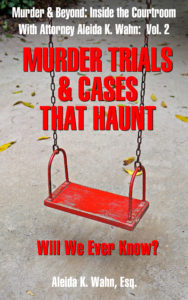
About Aleida K. Wahn, Esq.

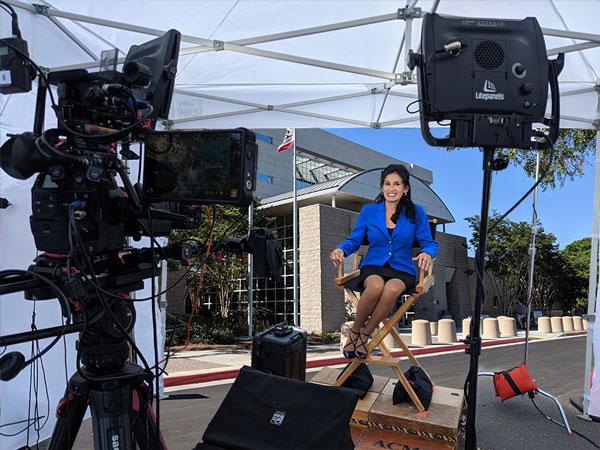
I am an attorney, award-winning true crime writer, and legal analyst of criminal cases. I cover criminal trials and write stories and books about compelling, gripping, and unforgettable cases that impact our world. I take you into the courtroom in high-profile murder trials, rape cases, crimes of passion, cases involving mental illness, deviant behavior, and more. I have a deep passion for true crime, criminal law, and all aspects of the criminal justice system. I have appeared as an expert on true crime shows, including “48 Hours,” “Snapped,” "Peacock TV's Tik Tok Star Murders," and “The Dead Files,” and provided legal analysis on high-profile criminal trials on Court TV, the Law & Crime Trial Network, Fox 5 News, ABC 10 News, and KUSI News. I also create and host shows with the Del Mar Television Producers Group, addressing criminal justice and social issues in recent criminal trials.
I provided my insight and legal analysis on Court TV and the Law & Crime Trial Network of the high-profile trial of former NFL star Kellen Winslow Jr. It was a trial that captured the nation as the heralded ex-football star with fame, fortune, and a famous name stood accused of multiple rapes and other sex crimes involving five women. As the trial delved into shocking facts, complicated legal issues, and unexpected twists and turns, I was there for every minute. After the trial, I wrote a book on the case, going behind the headlines to share the extraordinary details of what happened inside the courtroom. Judging Winslow Jr.: From NFL Star to Serial Rapist? Inside the Shocking Rape Trial of Kellen Boswell Winslow II is now available on Amazon.
I am passionate about telling true crime stories, as these penetrating stories have the power to move us all, while highlighting societal issues which need to be addressed. I have personally seen the human devastation which is present in each trial and believe there is a lesson to be learned in every single case. It is through awareness and examining critical issues society can effect change and even make new laws. To learn more, please visit: https://www.aleidalaw.com.
Read about the gripping and unforgettable trials that I have covered in my latest books:


